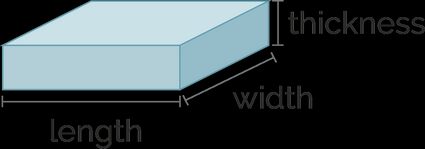Aluminum Weight Calculator
Table of contents
How to use the aluminum weight calculator?How to calculate aluminum weight?Aluminum alloy chartWhat is aluminum and where is it used?FAQsWith this aluminum weight calculator, you can quickly figure out how much a piece of aluminum weighs depending on the specific alloy and shape. Whether you're a student working on your physics homework 📓✏️, a construction professional in need of an accurate estimation of the cost of driving materials to the building site 🚚, or just eager to find out how much does an aluminum can weigh to satisfy your curiosity 🥫, you are bound to find this helpful tool.
The calculator is not all that we have to offer. Read the article below if you're interested in the math behind figuring out how much aluminum weighs; check out the aluminum alloy chart to see how the density of aluminum varies between different types and learn more about aluminum and its common uses. Hopefully, you will never struggle with figuring out the weight of aluminum per cubic inch again!
🙋 We also have a more general metal weight calculator if you're interested in finding the weight of other metals. We also have a separate steel weight calculator and gold weight calculator – being some of the popular metals in the industry.
How to use the aluminum weight calculator?
Please follow this short set of instructions on how to get your answer!
-
Start by picking the alloy you want to calculate the weight of. The average density of aluminum is the default option, but you have a long list of alloys to choose from. Click the button to see a drop-down menu of various aluminum types (organized by their number). The alloys have different densities, so picking the right one is crucial for the correct answer.
-
Pick the shape of the metal element. You can choose from a:
-
Rectangular prism - note that this includes elements with a square as their base and very thin sheets of metal. In the latter's case, remember to switch the unit of thickness to millimeters or thousandths of an inch!
-
Circular prism;
-
Hexagonal prism;
-
Octagonal prism;
-
Ring-based prism;
-
Wire;
-
Tube;
-
Sphere;
-
Ring;
-
Can; and
-
Other — we have included the most common shapes in our metal weight calculator, but if you cannot find the one you're looking for, pick this option. In this case, we will ask you to provide the volume of the metal element.
-
-
Depending on the shape, we will ask you to fill in some additional information that we need to calculate the volume of a single piece. For example, in the case of a rectangular metal sheet, the material weight calculator will need to know the length and the width of the rectangle to calculate its surface area, and, in the case of a circle, it'll ask you for the radius. In some cases, we will also ask for the thickness of the metal element.
-
Provide the material weight calculator with the number of metal elements. We have set 1 as the default option, so you can immediately see the weight of a single metal piece. Feel free to change this number to suit your needs!
After inputting all the data listed above, you will see your result in the bottom-most field of the metal weight calculator.
How to calculate aluminum weight?
Even though our aluminum weight calculator seems complex at first glance, at its core, it operates on a very simple formula. Calculating how much aluminum weighs comes down to the basic weight equation:
weight = volume × density
In the case of our calculator, you have the additional element of multiplying the weight by the number of elements, so the final equation is:
total weight = volume × density × number of pieces
As you can see, the way this tool works is, in reality, quite simple. The tricky part might come with manually calculating the volume of some of the shapes, and in some cases, the formulas tend to get complicated. But don't worry! You should find everything that you need to calculate volumes in our 3D geometry calculators section.
Aluminum alloy chart
This section will interest you if you're curious about the calculations our tool uses. This section is what lies at the very core of figuring out the weight of aluminum per cubic inch. As you already know, one of the factors that heavily influence the result is the density of aluminum, which varies depending on the specific alloy. Here, you can see a simplified aluminum alloy chart, where you can find the densities of every material included in our calculator.
Note: our aluminum weight calculator is based on density values given in kg/m³, as that's the format most commonly used in the sources related to the subject. If you're interested in changing the values to the imperial system, you can use our density converter.
Alloy | Density in kg/m³ |
|---|---|
Aluminum (average) | 2700 |
Melted aluminum | 2600 |
Aluminum 1050 | 2710 |
Aluminum 1100 | 2720 |
Aluminum 3103 | 3730 |
Aluminum 5005 | 2700 |
Aluminum 5083 | 2650 |
Aluminum 5215 | 2690 |
Aluminum 5454 | 2690 |
Aluminum 5754 | 2660 |
Aluminum 6005 | 2700 |
Aluminum 6063 | 2700 |
Aluminum 6082 | 2700 |
Aluminum 7075 | 2800 |
What is aluminum and where is it used?
Aluminum is a silvery-white, lightweight metal, which is most commonly associated with foil. The name comes from the Latin "alumen", meaning bitter salt.
Thanks to its many advantages (low weight, durability, and conductivity, to name but a few), aluminum is a popular material in many fields. Obviously, the one that comes to mind first is construction, but you can also find plenty of uses for this metal in such areas as transportation, electrical devices, and consumer goods. Here are some examples:
- In transportation, aluminum is used in the construction of high-speed rail systems. The Shinkansen trains in Japan, which utilize aluminum's light weight to cut down on friction, are a great example.

-
In construction, you can find aluminum in roofs. Thanks to its durability and high resistance to corrosion, aluminum roofs are relatively maintenance-free.
-
Aluminum is conductive, which means it can be used to build power lines. Combined with its surprising durability, it makes for a great material for long-distance power lines.
What's the density of the aluminum alloy, grade 6061?
The density of the aluminum alloy 6061 is 2700 kg/m3 (168.55 lb/ft3). This alloy is commonly used for aircraft structures, yacht construction, automotive parts, aluminum cans, and scuba tanks.
How do I calculate aluminum weight?
To calculate how much aluminum weighs, follow these steps:
-
Measure the aluminum element’s length, width, and thickness.
-
Determine the volume of the aluminum element based on its shape.
-
Multiply the volume by the density of aluminum to find its weight:
weight = volume × density
If you're unsure about the density of your aluminum element, you can use the average value of 2.7 g/cm3 as a first approximation.
How much does a 4 x 8 sheet of 1/4 inch aluminum can weigh?
It weighs 112.37 lb (50.97 kg). Here's how you can calculate it:
-
Determine the volume of the aluminum sheet with:
volume = width × length × thickness
For a 4 x 8 sheet with a 1/4 inch thickness, the volume is:
volume = 4 ft × 8 ft × 1/4 in = 0.6667 ft3
-
Multiply the volume by the density of aluminum. Since the specific alloy is not mentioned, we'll use the average density of aluminum, which is 168.55 lb/ft3 (2700 kg/m3):
weight = 0.6667 ft3 × 168.55 lb/ft3 = 112.37 lb
How much does aluminum weigh per cubic meter?
Aluminum weighs around 2700 kg per cubic meter, but this can vary depending on the specific alloy. Different aluminum alloys have different densities ranging from 2600 kg/m3 to 3730 kg/m3. Therefore, the weight of aluminum per cubic meter can also differ based on the alloy used.

